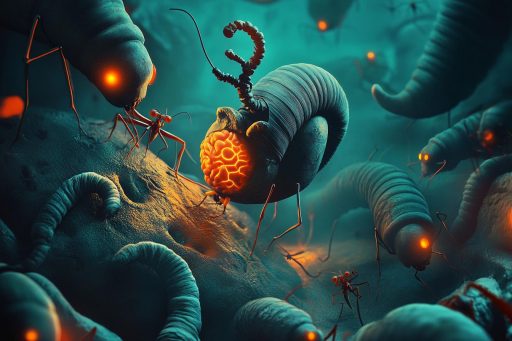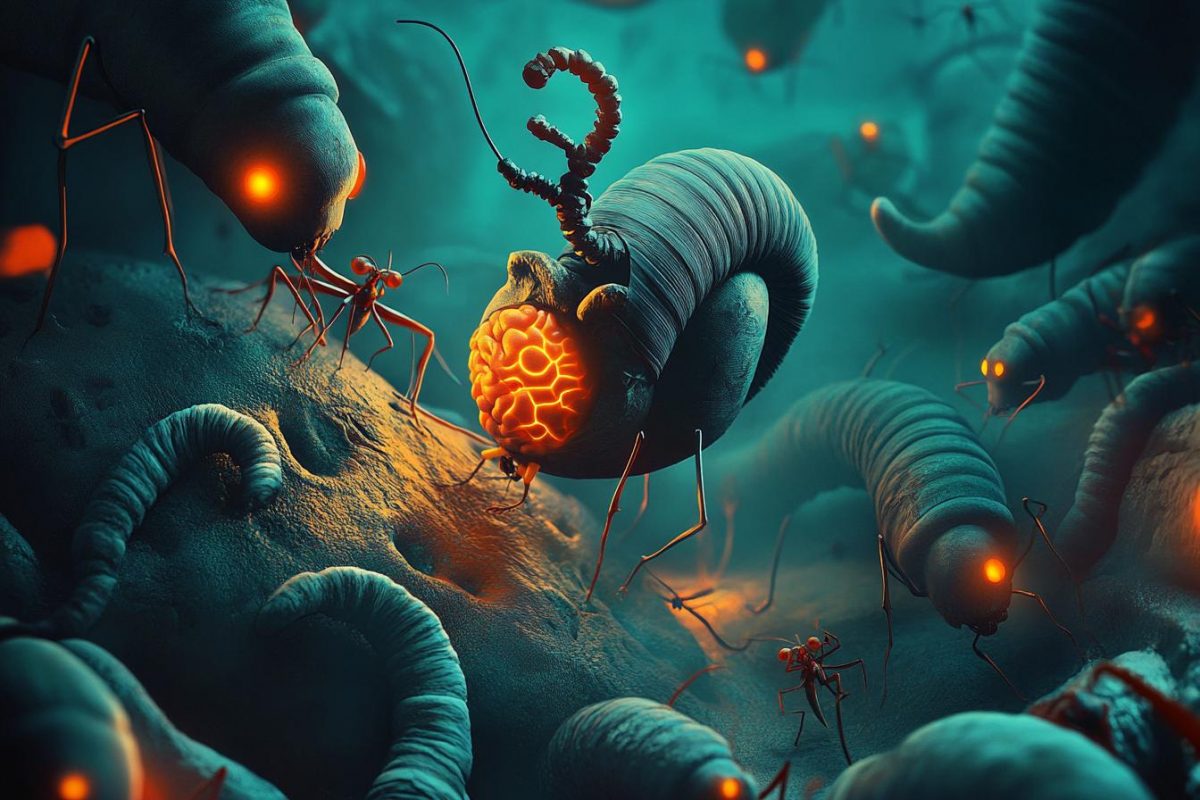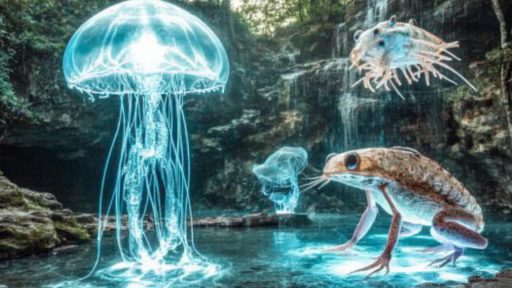
They infiltrate the mind, manipulate behavior, and transform their hosts into unwilling puppets. These real-life parasites are nature’s most unsettling brain-hackers—creatures that bend willpower to their advantage. Whether found in insects, animals, or even humans, these organisms reveal a disturbing truth: free will can be an illusion. Welcome to the terrifying world of parasites that take control from the inside out.
Toxoplasma gondii: The Cat’s Puppetmaster

This single-celled parasite thrives inside cats but must first pass through a rodent. Once it infects a mouse or rat, it rewires the brain, removing the natural fear of cats and even making them attracted to feline scent. The rodent walks right into danger, allowing the parasite to complete its life cycle. Some studies suggest humans infected with Toxoplasma may also experience behavioral shifts, including increased risk-taking.
Ophiocordyceps unilateralis: The Zombie Ant Fungus

This parasitic fungus invades the bodies of ants, taking over their nervous system and altering their behavior. Infected ants climb to an elevated spot, clamp onto a leaf or branch, and die—exactly where the fungus needs to grow and release spores. The result is a bizarre forest of ant corpses with fungal stalks emerging from their heads. It’s nature’s most cinematic case of mind control.
Leucochloridium paradoxum: The Pulsing Eyestalk Invader

Found in snails, this flatworm invades the eyestalks and turns them into brightly pulsing beacons. The parasite makes the snail’s eyestalks resemble caterpillars, luring birds to strike. Once eaten, the parasite completes its life cycle inside the bird, only to be spread again through bird droppings. It’s a grotesque and highly effective display of manipulation.
Dicrocoelium dendriticum: The Climbing Mind-Taker

This liver fluke has a complicated life cycle involving ants and grazing mammals. When an ant becomes infected, it is compelled to climb grass blades at night and clamp down, waiting to be eaten by a passing cow or sheep. During the day, the ant acts normal, only to resume its death mission each night. It’s mind control on a daily timer.
Sacculina carcini: The Parasitic Castrator of Crabs

This barnacle-like parasite invades crabs, growing roots throughout the host’s body and even hijacking its hormonal system. Male crabs begin to act like females, caring for the parasite’s eggs as if they were their own. The host is sterilized, mind-controlled, and transformed into a perfect parent—for someone else’s offspring. It’s a masterclass in biological betrayal.
Hymenoepimecis argyraphaga: The Spider Puppeteer

A parasitic wasp lays its egg on a spider’s back, and as the larva grows, it injects chemicals that change the spider’s web-building behavior. The spider stops creating its usual web and instead spins a special structure designed to cradle the wasp’s cocoon. Once the job is done, the larva kills and consumes the spider, taking over its body and its architecture.
Euhaplorchis californiensis: The Fish Mind-Bender

This parasite infects the brains of killifish, altering their behavior in extreme ways. The fish begin to dart toward the surface and flash their bellies—drawing attention from predators like birds. The parasite needs birds to complete its life cycle, and the fish’s risky new behavior ensures that happens. It’s mind control in plain sight.
Glyptapanteles: The Caterpillar Bodyguard Curse

Another parasitic wasp, Glyptapanteles lays its eggs inside a caterpillar, which continues to live even after the larvae emerge. But instead of fleeing, the caterpillar stands guard over the pupating larvae, thrashing at any approaching threats. Eventually, the host dies—but only after ensuring the safety of its parasites. The level of behavioral manipulation is astonishing.
Naegleria fowleri: The Brain-Eating Amoeba

While not a classic mind-controlling parasite, this deadly amoeba earns a place for its terrifying route to the brain. Found in warm freshwater, it enters through the nose and travels to the brain, causing confusion, hallucinations, and fatal swelling. Victims may exhibit erratic behavior before succumbing within days. It doesn’t just hijack the brain—it destroys it.
When Free Will Isn’t Yours

Nature has a dark side, and these parasites prove it with chilling precision. By hacking behavior, overriding instincts, and sometimes erasing identity itself, they challenge our very understanding of autonomy. If small organisms can control the minds of their hosts so completely, it raises unsettling questions: how much of our behavior is truly our own—and who, or what, might be pulling the strings?





